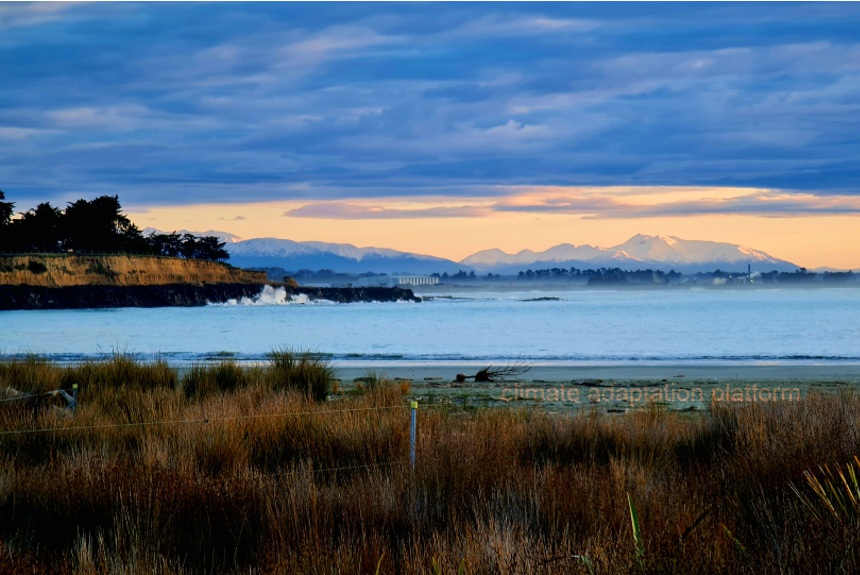The El Niño Southern Oscillation (ENSO) is one of Earth’s most influential climate phenomena because of its ability to change the global atmospheric circulation, which affects temperature and precipitation worldwide. El Niño and La Niña are the extreme phases of the ENSO cycle; between these two phases is a third phase called ENSO-neutral.
El Niño is a climate pattern that heats the waters in the eastern tropical Pacific Ocean and is the “warm phase” of the ENSO. La Niña is the “cool phase” and describes the unusual cooling of the Pacific’s surface waters. El Niño events occur irregularly at two- to seven-year intervals but are not a regular cycle or predictable as ocean tides.
The trade winds blowing westward across the Pacific Ocean push warm surface water toward the western Pacific, which borders Asia and Australia. In contrast, cold water rises toward the surfaces on the coast of Ecuador, Peru, and Chile, a process known as upwelling.
Recently, the Pacific experienced a rare “triple-dip” La Niña. Waters cooled in the Pacific for the third consecutive year, ending in 2022. La Niña has brought severe floods and record-breaking rainfall in eastern Australia and has dumped unusual amounts of precipitation on the North Island of New Zealand that caused catastrophic floods and landslides.
A research paper published in Nature on 26 July 2023 finds that the multiyear La Niña events are expected to increase under global warming. Authors from China, Australia, and the U.S. evaluated simulations from Coupled Model Intercomparison Project Phase 6 (CMIP6) models over 100 years from 1900–1999. They reported a significant increase in the frequency of multiyear La Niña events from 19 ± 11% in a low greenhouse gas emission scenario to 33 ± 13% in a high emission scenario.
The study notes, “Although strong El Niño events are projected to occur more frequently under greenhouse warming, the frequency of multiyear La Niña increases disproportionally more than that of strong El Niño, as seen in an approximately 65.5% increase (from 28.7 ± 4.0% in 1900–1999 to 47.5 ± 4.7% in 2000–2099) in the ratio of strong El Niño followed by multiyear La Niña overall strong El Niño events.”
Authors revealed the underlying mechanisms at work with increasing La Niña events: “Under present-day climate conditions, a strong El Niño in the boreal winter induces a negative North Pacific Meridional Mode (NPMM)-like response in the subtropical North Pacific, producing a La Niña in the ensuing winter with meridionally extensive sea surface temperature (SST) and easterly wind anomalies,” said Dr Jia Fan from the Institute of Oceanology of the Chinese Academy of Sciences (IOCAS), co-corresponding author of the study (Global warming, 2023).
“These findings suggest that weather extremes as seen during the 2020–2022 La Niña will probably occur more frequently in the near future,” said Dr. Geng Tao from Ocean University of China, first author of the study.
Dr. Jia said the results of this study strengthen calls “to reduce greenhouse-gas emissions to alleviate the adverse impacts of increased multiyear La Niña.”
Impacts of La Niña
According to NOAA, during La Niña, winter temperatures are warmer than normal in the South and cooler than normal in the North. La Niña can also lead to a more severe hurricane season.
In New Zealand, La Niña brings more northeasterly winds, which tend to get moist, rainy conditions to the northeast of the North Island and reduced rainfall to the south and southwest of the South Island.
South Island areas, such as Central Otago and South Canterbury, experience drought in El Niño and La Niña. Warmer than average temperatures typically occur over much of the country during La Niña, although there are regional and seasonal exceptions (The impact of, n.d.).
Sources:
Geng, T., Jia, F., Cai, W. et al. Increased occurrences of consecutive La Niña events under global warming. Nature 619, 774–781 (2023). https://doi.org/10.1038/s41586-023-06236-9
Global warming will cause more multiyear La Niña events: study. (2023, 26 July). EurekAlert. Retrieved from https://www.eurekalert.org/news-releases/996771
What are El Niño and La Niña? (2023). NOAA. Retrieved from https://oceanservice.noaa.gov/facts/ninonina.html#:~:text=normally%20too%20cold.-,La%20Ni%C3%B1a,-La%20Ni%C3%B1a%20means



Leave a Reply